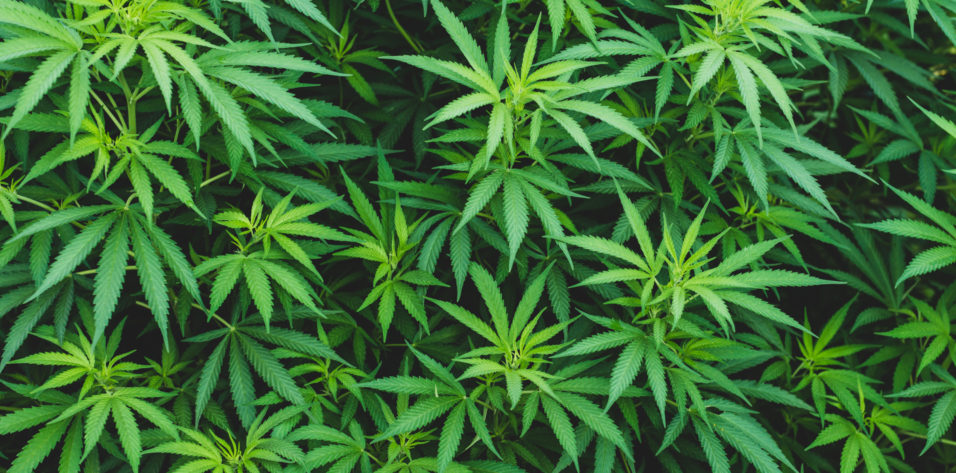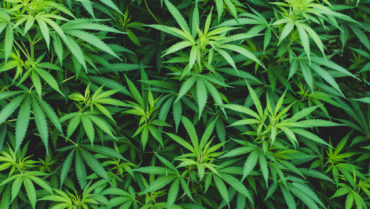In 1971, Hepler and Frank conducted the first study to demonstrate a reduction in IOP associated with cannabis inhalation.1 Since then, research has revealed greater complexity in the relationship between cannabis ingestion and glaucomatous optic neuropathy.
MIXED RESULTS
Clinical and basic scientific studies have elucidated important differences in the IOP-lowering effects of cannabis based on the chemical composition and specific strain of the plant. Cairns and colleagues found that one of the major components of cannabis, tetrahydrocannabinol (THC), lowers IOP by binding to the CB1 receptor present in ciliary epithelial and trabecular meshwork cells.2 Another major component of cannabis, however, cannabidiol (CBD), has the opposite effect on IOP and potentially deleterious consequences for individuals with glaucoma.3,4
Tomida and colleagues performed a randomized, double-masked, placebo-controlled crossover study of six patients with ocular hypertension or mild primary open-angle glaucoma.3 After washout of their usual topical IOP-lowering regimen, patients were randomly assigned to treatment with sublingual THC, lower-dose (20 mg) sublingual CBD, higher-dose (40 mg) sublingual CBD, or placebo. Two hours after treatment was administered, compared to placebo, patients who had received THC experienced a modest decrease in IOP, whereas those who had received the higher dose of CBD experienced a slight increase in IOP.
These clinical findings are supported by a basic science study performed by Miller and colleagues in which live mice were treated with topical THC and CBD.4 To clarify the effects of these agents, investigators tested CB1 knockout mice as well. Topical THC was found to lower IOP 8 hours after administration, whereas topical CBD produced a substantial increase in IOP. Interestingly, this effect was not observed in CB1 knockout mice, suggesting that CBD may have an antagonistic effect to THC at this receptor. The simultaneous application of THC and CBD had no appreciable effect on mouse IOP, presumably because the effect of each agent was cancelled out.
IMPLICATIONS
Cannabis is approved for medicinal purposes across most of the United States. A growing number of states have approved this substance for recreational use as well. In addition to glaucoma, medical cannabis is approved for the treatment of conditions such as cancer, irritable bowel syndrome, and various pain disorders. It is important to note that states that have approved medical cannabis for these indications do not distinguish among strains of the cannabis flower. THC and CBD levels therefore vary among products, yet studies have shown that not all cannabis strains produce similar effects.2-4 As described earlier, those with higher THC content can be expected to lower IOP, whereas strains with higher CBD content can be expected to increase IOP. It is therefore important that eye care providers caution patients who are interested in treating their glaucoma with medical cannabis that products with a high CBD content may have a detrimental effect on their disease process.
Most studies of medical cannabis for the treatment of glaucoma have shown a limited duration of action and associated systemic effects, including euphoria and hypotension. Because of these issues, several esteemed medical societies have taken the position that the risks associated with cannabis ingestion outweigh any potential benefit. Furthermore, currently available IOP-lowering therapies using medical, laser, and surgical modalities are more effective than cannabis-derived therapies in their current state.5
Research such as that by Tomida et al,3 however, suggests that the mixed results of earlier studies with regard to the effect of cannabis on IOP may be related to the use of various strains with differing proportions of THC and CBD. Future studies investigating cannabis and IOP lowering should therefore specify the strain and THC/CBD composition to best assess therapeutic potential.
CONCLUSION
It is important to balance the therapeutic potential for cannabis in glaucoma treatment with the possibility of adverse systemic effects with ocular consequences. A position statement published by the American Glaucoma Society and authored by Henry Jampel, MD, MHS, alludes to these adverse effects, including but not limited to mood alteration with a decrease in mental capacity, pulmonary damage, and systemic hypotension.5 A major consideration is that systemic hypotension could lead to a decrease in ocular perfusion pressure and progressive glaucomatous damage. In addition, the inhalation of marijuana is associated with a short duration of action in terms of reducing IOP, and there is the potential for rebound ocular hypertension.
Besides a potential for lowering IOP, cannabinoids may exhibit neuroprotective effects that could fundamentally alter the course of glaucoma.6 If research bears out this concept, topical formulations of cannabis could mitigate systemic effects and permit repeat dosing. A challenge in this regard is that cannabinoids are lipophilic in nature with poor ocular absorption, and they cause irritation of the ocular surface. Kabiri and colleagues described a novel approach to this problem that involves loading cannabinoid mimic molecules into a nanoparticle-laden hydrogel.7 The hydrogel is a composite of hyaluronic acid and methylcellulose and is intended to be dosed at night. The study by Kabiri et al suggests that this method achieves high degrees of corneal penetration.7 A more recent study of the cannabinoid cannabinol indicated that this agent may have antiapoptotic and neuroprotective potential for retinal ganglion cells under cytotoxic stress from increased IOP in an in vitro model.8
Nearly 50 years have elapsed since Hepler and Frank first showed an association between cannabis and glaucoma therapy, and researchers’ and clinicians’ understanding of the effects of cannabis on the course of glaucomatous disease has been slow to advance. As the availability of and interest in medical cannabis grows, there is reason to think that research in this area will accelerate in the coming years.
1. Hepler RS, Frank IR. Marihuana smoking and intraocular pressure. JAMA. 1971;217(10):1392.
2. Cairns EA, Baldridge WH, Kelly MEM. The endocannabinoid system as a therapeutic target in glaucoma. Neural Plast. 2016;2016:9364091. doi:10.1155/2016/9364091
3. Tomida I, Azuara-Blanco A, House H, Flint M, Pertwee RG, Robson PJ. Effect of sublingual application of cannabinoids on intraocular pressure: a pilot study. J Glaucoma. 2006;15(5):349-353. doi:10.1097/01.ijg.0000212260.04488.60
4. Miller S, Daily L, Leishman E, et al. ∆9-tetrahydrocannabinol and cannabidiol differentially regulate intraocular pressure. Invest Ophthalmol Vis Sci. 2018;59(15):5904-5911. doi:10.1167/iovs.18-24838
5. Jampel H. American Glaucoma Society position statement: marijuana and the treatment of glaucoma. J Glaucoma. 2010;19(2):75-76. doi:10.1097/IJG.0b013e3181d12e39
6. Hampson AJ, Grimaldi M, Axelrod J, Wink D. Cannabidiol and (-)Delta9-tetrahydrocannabinol are neuroprotective antioxidants. Proc Natl Acad Sci U S A. 1998;95(14):8268-8273. doi:10.1073/pnas.95.14.8268
7. Kabiri M, Kamal SH, Pawar SV, et al. A stimulus-responsive, in situ-forming, nanoparticle-laden hydrogel for ocular drug delivery. Drug Deliv Transl Res. 2018;8(3):484-495. doi:10.1007/s13346-018-0504-x
8. InMed releases CBN preclinical results in glaucoma. News release. PR Newswire. May 27, 2020. Accessed June 2, 2020. https://prnmedia.prnewswire.com/news-releases/inmed-releases-cbn-preclinical-results-in-glaucoma-836842764.html.



